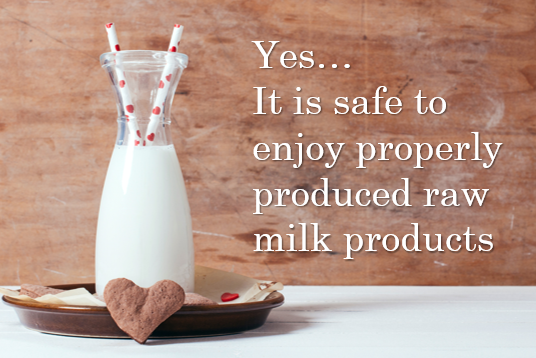
It was OK for 10,000+ years
If you breast feed your child, it's raw milk. When a cow feeds her calf, it's raw milk.
But we do not see a problem with breast fed babies or nursed calves, or puppies, or kittens, or any other infant mammal... it's all raw milk.
Today's clean, sanitary, and inspected dairy barns, milking parlors, and processing rooms the idea is refrigeration and constant sanitation. When the milk leaves the cow it flows over a cold plate that drops it to 60F in seconds and it flows directly into a stainless steel bulk tank kept at 38-40F and agitated on a schedule that keeps all the milk cool and "together".
When it's time to bottle, the milk is packaged in gallon or half gallon jugs. If it's to be turned into butter and skim milk it is processed in a centrifugal separator (all stainless steel). Processing is all done in cool rooms; cream, butter, skim milk, curds are all created within an hour or two of leaving the bulk tank.
This is the difference between early 1900's when milk needed to be pasturized and today when processes are sufficiently well controlled that pasteurization is, frankly, an optional activity.
Raw Milk Safety
Pasteurization is a technological solution for a man-made problem.
Indiana law: It is against Indiana law to sell unpasteurized (raw) milk for human consumption.
Indiana law requires this statement: Not intended for human consumption.
The First Amendment of the United States Constitution gives us the absolute right to express our opinion even if it is contrary to what a government agency would like us to say. The remainder of this page our exercise of that right..
Until the mid-1800's there was no need for Pasteurization, our unprocessed milk supply was safe, wholesome, nutritious, and delicious. To reduce costs, milk producers moved many operations into the big, rapidly expanding cities. But these cities had no good pastures, they were dirty, and full of harmful disease, many of which could infect cows and get into the milk supply. To combat this governments required that all milk for human consumption be Pasteurized. This did NOT solve the problem, is merely masked many of the symptoms.
Todays rural dairy farmers have access to extremely effective sanitizers, easily cleaned stainless steel tanks and piping, easily sanitized automated milking equipment, and perhaps most importantly, reliable refrigeration.
Herd health is extremely important and, especially with Certified Organic farms, the health of the cows is better than its ever been, resulting in disease-free, wholesome, milk that retains all of the nutrients that are damaged by Pasteurization and poor herd feeding programs.
Today, over 10 million American's regularly consume raw milk and raw milk products with no undesirable effects. (learn more).